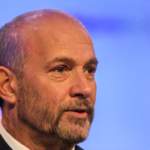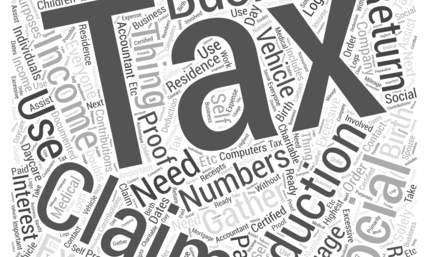What Is a Shift Differential? - The Full Guide
Businesses that operate 24/7 need to ensure that employees who are working non-traditional hours are properly compensated. So, when it comes to those working night shifts and second shifts, it’s important to make sure that you are offering them additional pay that is going to encourage them to take on the undesirable hours.
The best way to do this is through shift differentials. Shift differentials are a premium pay rate that is calculated based on the employees’ regular hourly pay rate and adding a certain percentage on top of this when they are working outside regular hours.
In this guide, we’ll be taking you through everything you need to know about shift differentials, from what they actually are to how they are calculated. This allows you to determine whether shift differentials are right for your business.
Also read: How To Make Business Cards

Why Do Shift Differentials Exist?
Shift differentials exist because they encourage employees to work undesirable hours with a financial incentive. Not only are shift differentials applied to those working the night shift, but they are also applied to those working on public holidays.
Approximately 4% of American employees work overnight, while 12% work on a rota schedule which can include overnight shifts. Some employees work second and third shifts as well, which can also provide shift differentials
Some of the industries that shift differentials are used include:
-
Customer support
-
Healthcare
-
Manufacturing
-
Transportation
However, there are many other industries that use shift differentials. If your business runs 24/7, then it is likely that there is a shift differential scheme in place.
Also read: How To Advertise Your Business?
Why Do Businesses Use Shift Differential Pay?
So, why do businesses use shift differential pay? And is it something that you should consider? If your business runs 24/7 and requires employees to work public holidays or overnight shifts, then shift differential pay is definitely something that you need to consider.
Approximately 92% of companies will offer to shift differential pay to employees who have hourly pay, however, only 36% of companies also extend shift differential pay to salaried employees. This is because salaried employees tend to have more benefits and perks, meaning that working extra hours can be deemed part of the job and balances this out.
Salaried workers may be offered shift differential pay if they are working irregular hours on a frequent basis.
According to the Fair Labor Standards Act (known as the FLSA), shift differential pay is not a legal requirement, meaning that it is up to the employer whether they want to add the payment and how much to pay. However, this doesn’t mean that employers can pick and choose who receives shift differential pay. If they establish a rate of pay, then this must be applied to all employees who do the work.
Also read: Marketing in Business

How Much Is The Average Shift Differential Pay?
When it comes to determining how much the average shift differential pay actually is, it’s quite difficult to work out. This is because shift differential pay can range between 5 and 15 percent in additional wages, or simply a flat fee that can range between 50 cents and $1.25.
As previously mentioned, the amount of pay you will receive depends on the location of the job, as well as the industry that you work in.
Also read: How to Value a Business
Calculating Shift Differential Pay
Calculating shift differential pay will differ depending on how much the employee is paid on an hourly basis. A percentage will then be added to the hourly pay according to what the business has offered to pay, which will then determine how much the employee will receive in total.
A general rule of thumb is that the more undesirable the shift in question is, the higher the shift differential pay will be. This will incentivize employees to take on the shift and ensure that they feel as though they are getting paid a fair wage for the work they are doing.
When it comes to calculating shift differential pay for salaried staff, a percentage will be determined according to their current salary and the appropriate calculations will then be worked out.
Also read: Open a Business Bank Account
Is Shift Differential Pay Different From Overtime Pay?
Overtime pay is different to shift differential pay as overtime relates to the number of hours that are worked. For example, if an employee is contracted to work 37.5 hours per week but works an extra 5 hours, this would be considered overtime. On the other hand, shift differential pay is related to when the contracted hours are worked.
Shift differential pay is always calculated within overtime so if you are working overtime during undesirable hours, you will be entitled to the additional payment.
FAQ
How Do You Calculate Shift Differentials?
Shift differential is worked out by multiplying the percentage by hourly wage. An example of this would be if the employee earns $20 per hour and the shift differential on a night shift is 10%, you would conduct the following sum: 20 × 0.10 = 2. This means that the differential is $2 per hour.
Does Amazon Pay Shift Differential?
Amazon pays its employees the shift differential if they are working night shifts. This ranges from $0.50 to $2, depending on the location of the worker as well as what night they are working. Weekend night workers will receive higher payments.
How Does The Weekend Shift Differential Work?
When it comes to weekend shift differential, the pay will most likely be higher when weekend nights are worked. Weekend nights are applied to the hours worked between Saturday and Sunday. How much employees are paid in shift differential is dependent on the location and job.

Conclusion
Bringing in a new way of paying your employees can be tricky, especially if you have never used this way of payment before. However, when it comes to how your business operates, such as running the payroll, this shouldn’t be an issue. This is because the payroll deductions will stay the same.
Make sure that you have differential shift rates that are clearly defined to ensure that your employees will be happy and can adjust better to their various working hours.
When having a business it is important to have all our your finances in order, especially if you have employees. Having a healthy streamlined way to produce paystubs will help with this immensely. Our pay stub generator is a fantastic tool for producing pay stubs for all.















